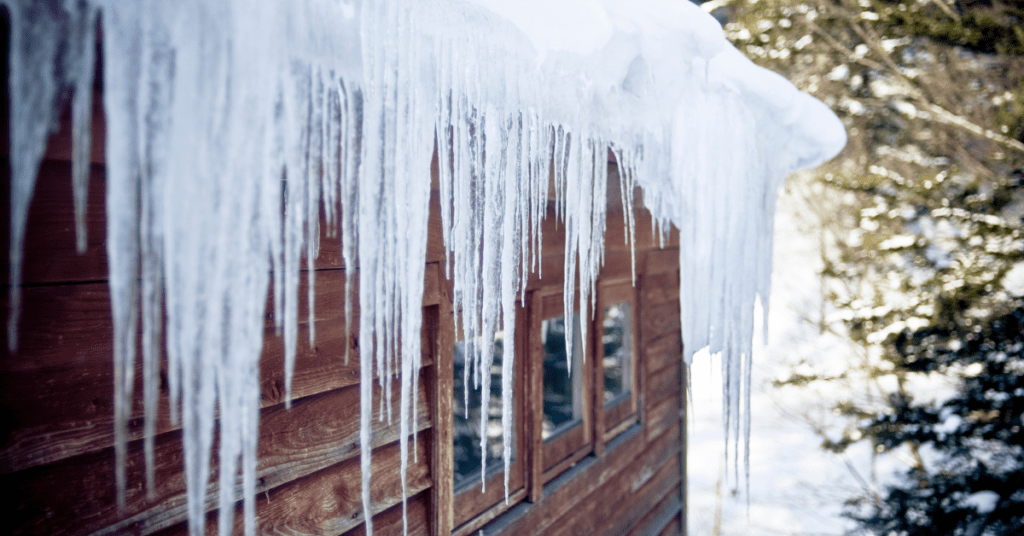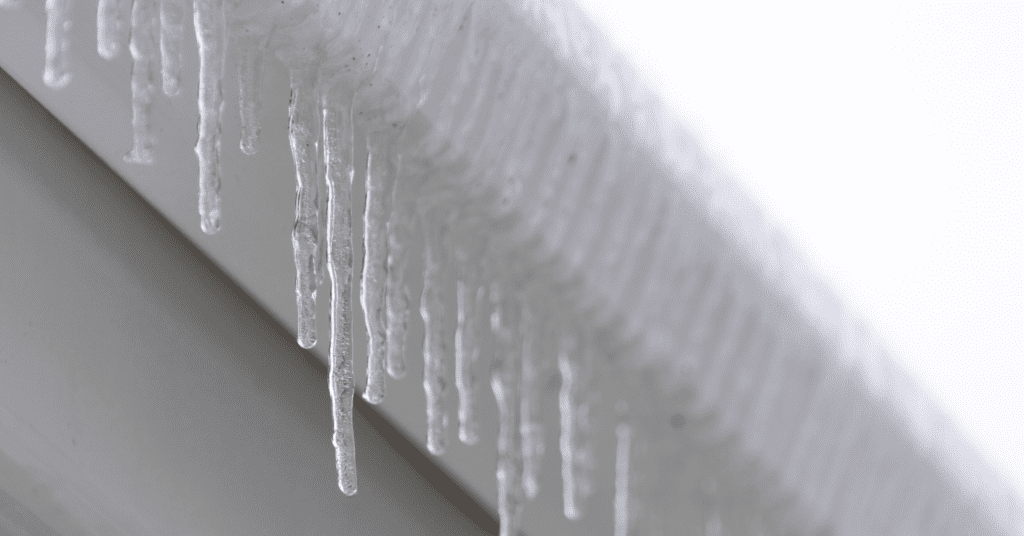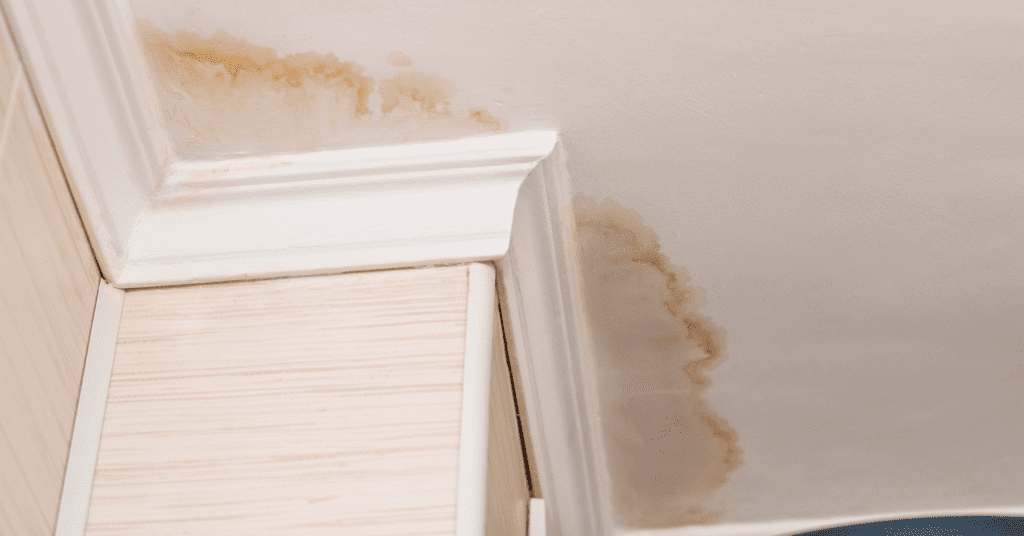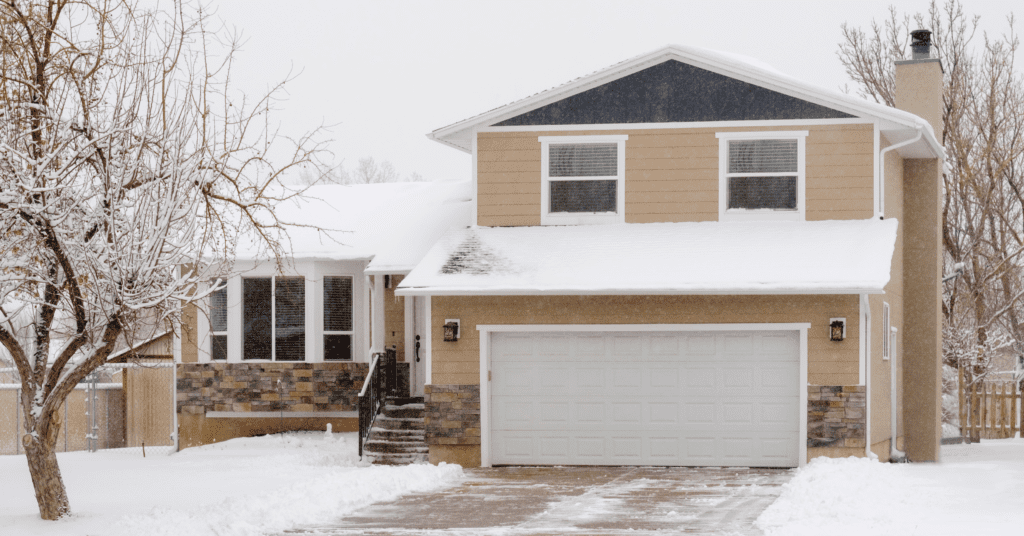Ice Dams On Roofs: Protecting Your Home from Winter Damage


When winter sets in, it’s essential to be aware of the potential risks that come with the cold weather. One common issue that homeowners face is the formation of ice dams on roofs. Ice dams can cause significant damage to your home if not addressed promptly. In this article, we will explore what causes ice dams to form, how to identify their presence, the risks associated with them, and steps for prevention and removal. By understanding these factors, you can take proactive measures to protect your home and avoid costly repairs.
What are Ice Dams?
Ice dams form when the snow from your roof melts and refreezes at the edge of the roof. This seemingly paradoxical occurrence can be attributed to basic thermodynamics and poor ventilation systems. When snow accumulates on the roof’s surface, it acts as insulation, trapping heat in the attic and raising the roof’s temperature. Poor ventilation systems often contribute to the formation of ice dams. Understanding the benefits of proper roof ventilation can provide clarity on why maintaining good airflow is crucial.
As the snow is melted by this heat, water flows down the roof. However, the lower part of the roof is typically colder than the top. When the water reaches the cold edge or gutter, it refreezes, forming a dam. With each subsequent snowfall, this process continues, resulting in a larger dam and increased damage to the roof.
Causes of Ice Damming
Apart from inadequate ventilation, several other factors contribute to the formation of ice dams:
Poor attic insulation
Inadequate insulation in the attic allows heat to escape, raising the temperature of the roof and causing snow to melt unevenly.
Exhaust fans vented to the attic
Bathroom exhaust fans that direct moist air into the attic can increase the overall humidity and contribute to ice dam formation.
Lack of insulation of folding attic stair openings
If attic stair openings are not adequately insulated, warm air can escape into the attic, further raising the roof’s temperature.
While other causes of poor ventilation and insulation may exist, these three factors are the most common culprits.
How can I identify if an ice dam has formed on my roof?
1. Interior Water Damage
The presence of water damage inside your home can be a clear indicator of an ice dam. Identifying an ice dam early is crucial. Familiarize yourself with early signs of roof damage to stay proactive. If you notice any evidence of water seepage, such as water stains or peeling paint on the ceiling, it is crucial to inspect your roof for ice damming.
2. Ice on Exterior Walls
Ice forming on exterior walls, beneath siding, or behind the soffit which is the material beneath the eave that connects the far edge of your roof to the exterior wall of your house. can be a telltale sign of ice dams. As water backs up on the roof eave, the section of the roof that extends beyond the exterior siding, it seeps and freezes behind these surfaces. During warmer weather, this may manifest as visible water stains.
3. Gutters Not Draining
If your gutters are not draining properly, it may be due to ice dams obstructing the flow of water. If left unattended, this water can penetrate the structure of the roof or freeze, potentially damaging the roofing material.
4. Icicles Form at Roof/Gutter Edge


Icicles hanging along the edge of your gutters could indicate the presence of an ice dam. These icicles suggest that water is not properly draining from the roof, which can lead to further damage to your roof if left unaddressed.
5. Snow Melts High on the Roof, But Not Low
If you observe a pattern where snow and ice buildup is concentrated higher on your roof but remains clear further down, it is likely a result of an ice dam. This observation indicates that melted snow and ice are refreezing at the roof eave.
What are the risks associated with ice dams?


Ice damming poses various risks to your home and can result in the following damages:
1. Water stains on the ceiling
As water seeps through the roof, it can leave unsightly stains on your ceilings.
2. Dislodging of roof shingles
The weight and pressure from ice dams can dislodge or weaken roof shingles, compromising the roof’s integrity.
3. Sagging of gutters due to heavy ice
The accumulation of ice from an ice dam can cause gutters to sag or detach from the roof, impairing their ability to effectively direct water away from the house.
4. Damaged plaster and peeling paint
Moisture from ice dams can cause plaster walls to deteriorate and paint to peel.
5. Deteriorating wall cavities
Water seeping into wall cavities can lead to mold growth and rot, compromising the structural integrity of your home.
6. Corrosion of metal fasteners
The presence of moisture can accelerate the corrosion of metal fasteners, weakening their hold on your roof.
Ice dams are just one of many potential dangers to your roof. Explore the 12 common threats to your roof’s structural integrity to be better prepared.
What steps can be taken to prevent ice dams from forming?
Preventing ice dams requires a multi-pronged approach, including the following measures:
1. Have your gutters and downspouts thoroughly cleaned
Get all leaves, sticks, and debris cleared from your gutters and downspouts to ensure proper water flow. This will help prevent clogs and ice dam formation.
2. Have the excess snow removed from your roof
Try to minimize the amount of snow accumulation on your roof. This will reduce the likelihood of ice dams forming.
3. Keep gutters and downspouts clear of snow and icicles
Throughout the winter, regularly check and have the snow cleared and icicles removed from your gutters and downspouts. This will prevent water from backing up and forming ice dams.
4. Have your insulation and ventilation evaluated in your attic
Ensure your attic is adequately insulated to prevent heat from escaping and warming the roof. Additionally, ensure proper ventilation to maintain a consistent temperature and minimize the risk of ice dams forming.
Apart from addressing ice dams, ensuring the importance of flashing in roof integrity can further protect your home from water-related damage.
How is an existing ice dam removed?
Removing an existing ice dam requires caution and should be done by professionals. Here is what the process should look like:
- Your roofers will prepare a hose connected to a hot water source.
- They will then carefully aim the hot water at the ice dam, allowing it to melt.
- Avoid directing the pressurized water directly against the shingles to prevent damage.
- They will ensure all chunks of ice are cleared from the gutters to prevent clogs.
Winter brings unique challenges to roofing repairs. If you’re dealing with ice dams or other issues, discover the nuances of dealing with emergency roofing repairs during winter.
What are the costs associated with preventing and/or removing an existing ice dam?
The cost of preventing or removing ice dams can vary depending on the severity of the issue and the size of your roof. Budgeting for roof repairs or maintenance? Here’s how you can compare re-roof estimates to ensure you get value for your money. It is advisable to contact a professional roofing company for an accurate assessment and quote. Here at Vantage Roofing Ltd. we specialize in ice dam removal and can provide expert advice on prevention measures.


Conclusion
Ice dams on roofs pose significant risks to your home during the winter months. Understanding the causes, identifying their presence, and taking preventive measures can help safeguard your property from potential damage. By diligently cleaning gutters, minimizing snow accumulation, evaluating insulation and ventilation, and promptly removing existing ice dams, you can prevent costly repairs and protect your home’s structural integrity. Be proactive in addressing ice dams to ensure a safe and secure living environment for you and your family. Addressing ice dams is just one aspect of roof protection. Dive into the best 12 ways to proactively protect your roof for comprehensive insights.
Winter weather can be unpredictable, but your choice in roofing professionals doesn’t have to be. If you’ve identified signs of ice dams or are looking to proactively safeguard your home against them, reach out to our dedicated team. We proudly serve a wide range of locations. Whether you’re in Burnaby, New Westminster, Coquitlam, Port Coquitlam, Port Moody , Delta, Ladner, Vancouver, North Vancouver, West Vancouver, Richmond, Surrey, White Rock, Maple Ridge, Pitt Meadows, or Langley our commitment to quality remains unwavering. Let us help you ensure a safe and resilient roof over your head. Contact us today!
